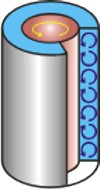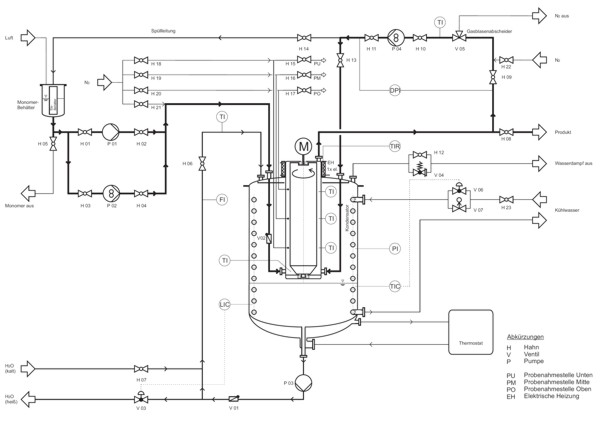Project description
A Taylor-Couette reactor (TCR) consists of two concentric cylinders. The inner cylinder is rotating. The flow induced by the rotation of inner cylinder, with or without a superimposed axial flow, is characterized by the existence of axisymmetric counter rotating vortex cells spaced regularly along the cylindrical axis. The Taylor-Couette reactor provides certain advantages for a number of practical applications. Among them is the narrow residence time distribution, which corresponds to an almost plug-flow performance under certain conditions. Another characteristic of the Taylor-Couette flow is the rather homogeneous distribution of the mixing intensity in the reactor volume, compared with e.g. conventional stirred tanks, combined with mild local shear rates. These properties are desirable for most of the chemical reactions, including fast reactions resulting in solid products or polymers. Furthermore, this type of reactor exhibits a high surface-to-volume ratio, which makes it preferable for highly exothermal or endothermal reactions.

Fig. 1: Taylor-Couette Flow
The mixing behaviour of a reactive system from non-Newtonian fluids (e. g. free radical polymerization of methyl methacrylate) is in this research period theoretical and experimental investigated. Variation of geometrical and technical parameters, and variation of the viscosity ratios should be studied.
Therefore, a new reactor would be designed to induce the chemical reaction in the gap between two concentric cylinders. The reactor has two main parts: the Taylor-Couette system and the water film system. According to the high specific heat capacity of water, a warm water film would be used to supply or remove the reaction heat uniformly on the wall surface of the external cylinder. The water flow falls on the wall downwards. With a 3 mm water film the reactants are heated in the gap very well.

Fig 2: Process flow diagram of the Taylor-Couette reactor

